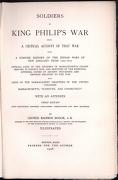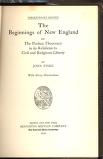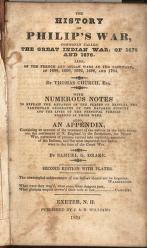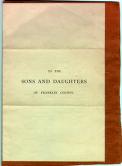|

"Soldiers in King Philip's War..."

"Philip. King of Mount Hope"

"Eulogy on King Philip as Pronounced at the Odeon"

"History of Philip's War"

"To The Sons and Daughters of Franklin County," with a Poem about Bloody Brook.
|
Summary and Objective
Students will understand that there were differences in beliefs about land and land use among the many indigenous peoples and the English settlers at the time of Metacom's War by examining the maps and accounts. By doing this students will begin to develop understandings about cultural and social conflict during our colonial period. Students will apply these understandings to the essential questions: How does what people did in the past influence the present? How does point of view influence our understanding of history?
Teaching Plan
Step 1.
Students begin with this lesson having had instruction on Massasoit and the Wampanoags, Governor Bradford, the treaty signed by both, the 50 years of uneasy peace that followed, the death of Massasoit, his two sons, Wamsutta and Metacom, then the untimely and suspicious death of Wamsutta and the rise of Metacom as leader of the Wampanoags, along with the migration and settlement of European settlers that lead to Metacom's War.
Step 2.
In small groups students will examine the documents and maps in the collection. They will also access the following link http://www.1704.deerfield.history.museum/scenes/index.do page of the "Raid on Deerfield".
The following questions will be used to begin the discussions: What do you notice about the location of the various settlements of indigenous and English? How do you account for the differences in the English and indigenous peoples attitudes? What or whose point of view is missing in these documents? What outcomes or consequences can be atributed to the misunderstandings between these groups of people?
Step 3.
Students will discuss their findings and record these on a Venn diagram or similar compare and contrast graphic organizer.
Step 4.
The diagrams will be posted and added to as the unit on colonization continues. Large and small group discussions will use these findings to support ideas and opinions expressed.
Step 5.
As a follow-up activity students will choose one of the following writing activities and write as an indigenous or English person: Write a letter to family, Write an ode or ballad describing a point of view, Write a news story about the events, retell the event in the oral tradition (digital recording) or write a diary entry.
|




